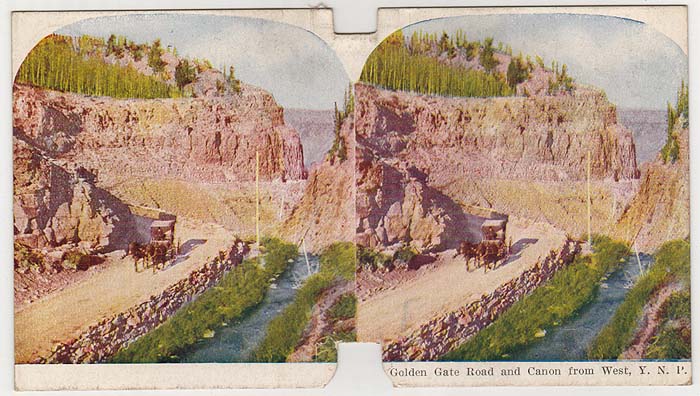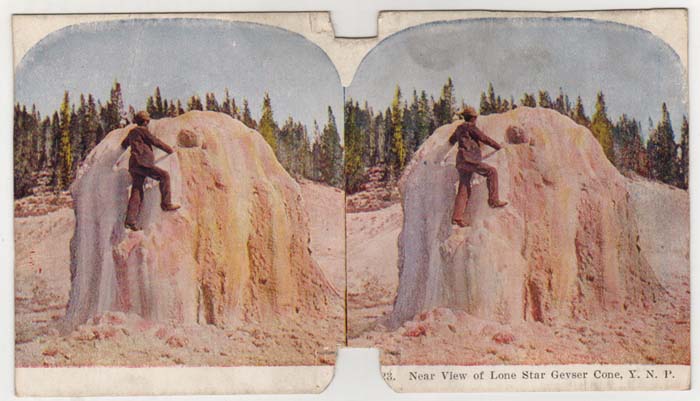
|


The Whiting Brothers (Richard Ross and William A.) were active as stereoview publishers from 1900 (some negatives date earlier) to 1943. Previous to beginning their own business, the brothers were Keystone salesman up to 1899. Richard Ross Whiting had personally made many of the Keystone negatives. The two published card-mounted views (some hand colored) up to 1908.
In
1913, they reorganized as the American Novelty Company and
began manufacturing Whiting’s "Sculptoscopes." These were
self-contained cylindrical metal stereoscopes for use in
arcades or on store counters. Patented between 1913 and 1922,
they were operated by the user. Costing one penny, the viewer
got to see 15 views. Total capacity of these viewers was 90
views. Most of them used "notched" lithographs. The majority of
these special lithographs were delivered to the Whiting View
Company by
T. W. Ingersoll and are
still fairly abundant today. Rarely did they use real photos.
Views were sometimes issued in boxed sets, pre-cut to fit the
internal holders. Views were not made especially for the viewer,
but instead there was a cutting device that notched any view to
fit. These views were in use through the late 1930’s. Several
dozen examples of Yellowstone views exist.
For Yellowstone collectors, two printing styles exist of Whiting’s, black & white 1300 series. One on regular sized, gray mounts, and the other on tan mounts. The numbering appears continuous from #1300 to at least #1322 although not all views have surfaced and been recorded.

|
1314-On the Golden Gate Road, Yellowstone National Park, U.S.A.

|
1300-The "Golden Gate," Yellowstone National Park, Wyo., U.S.A.

|
Golden Gate Road and Canon from West, Y.N.P.

|
23. Near View of Lone Star Geyser Cone, Y.N.P.

